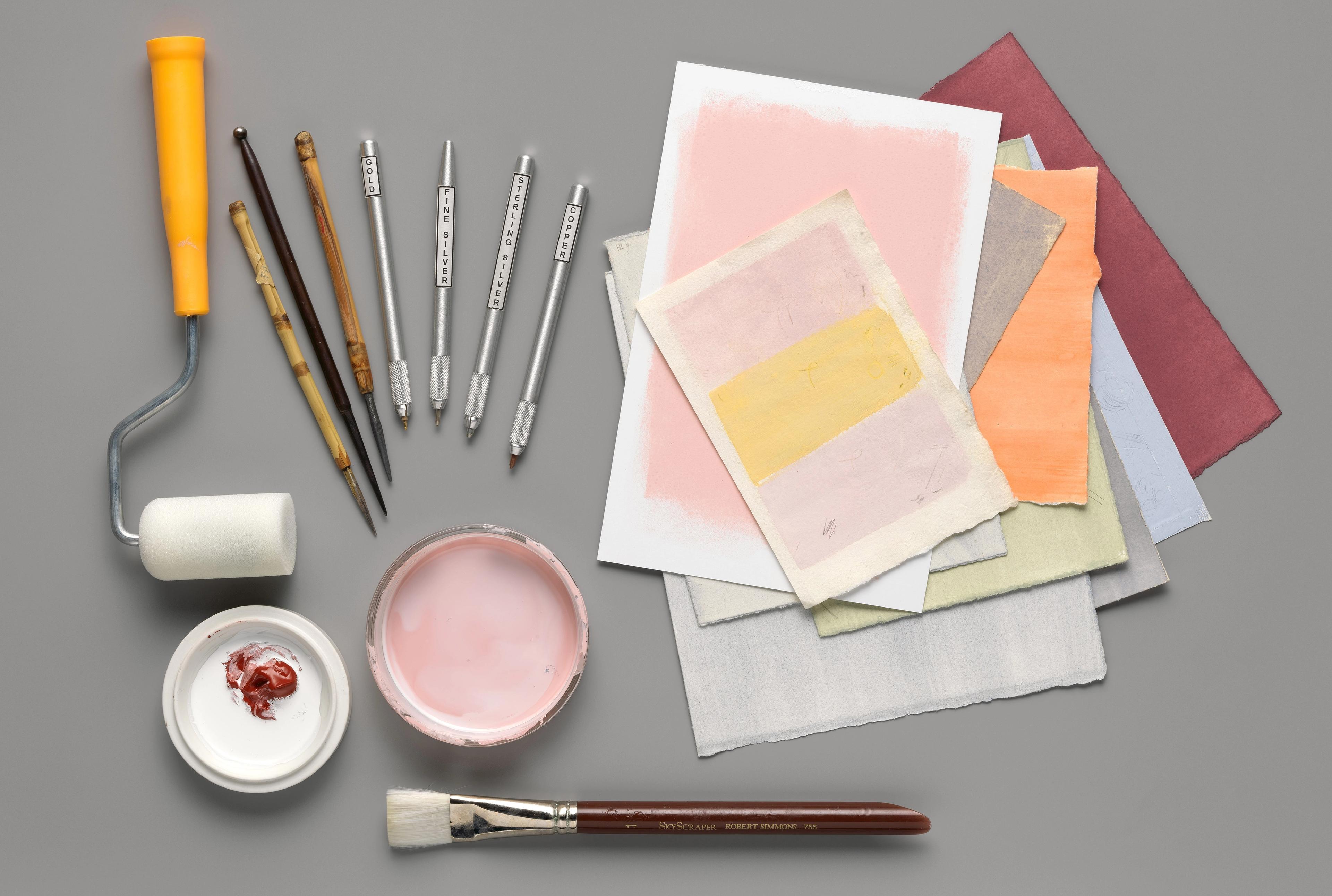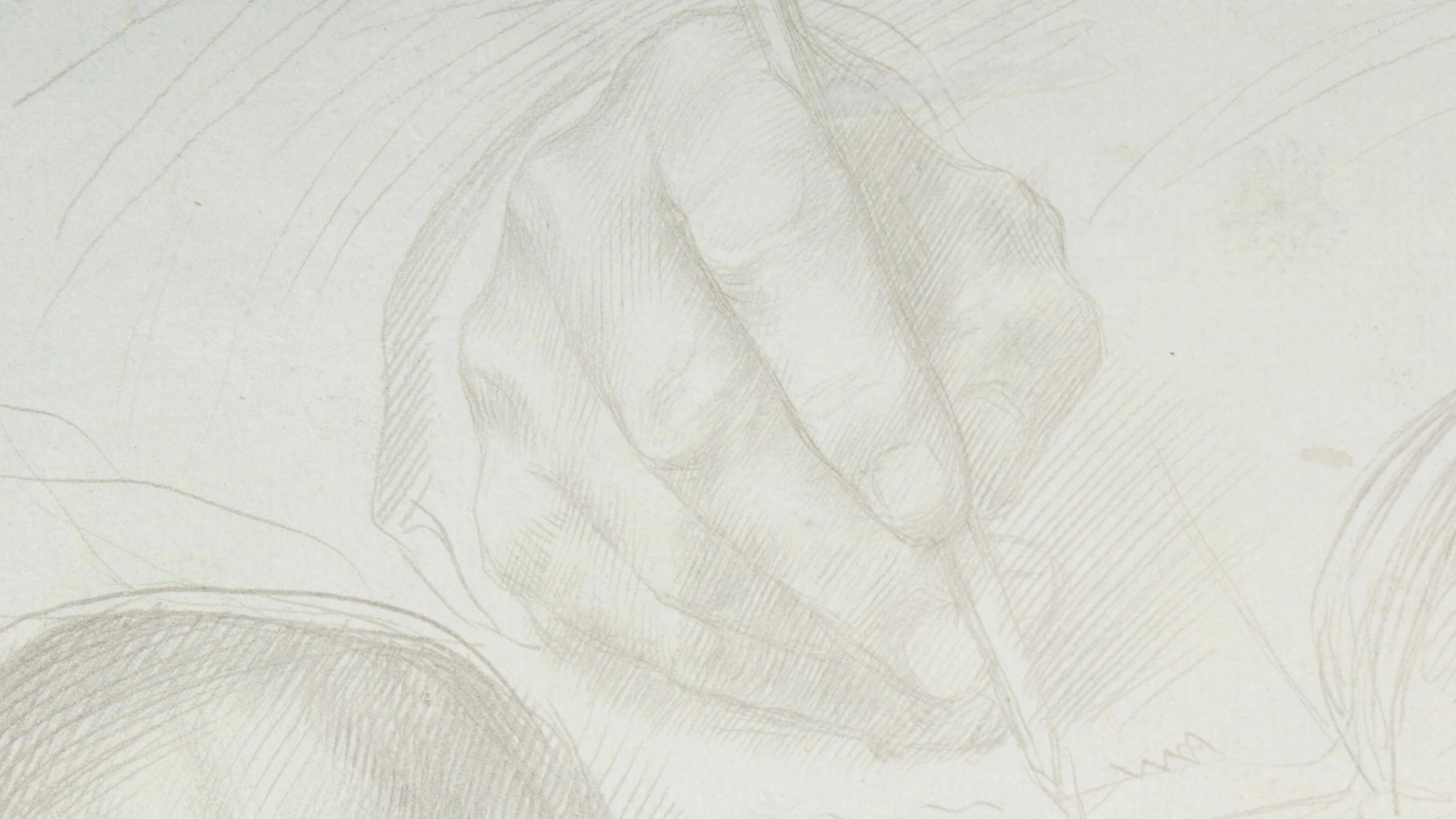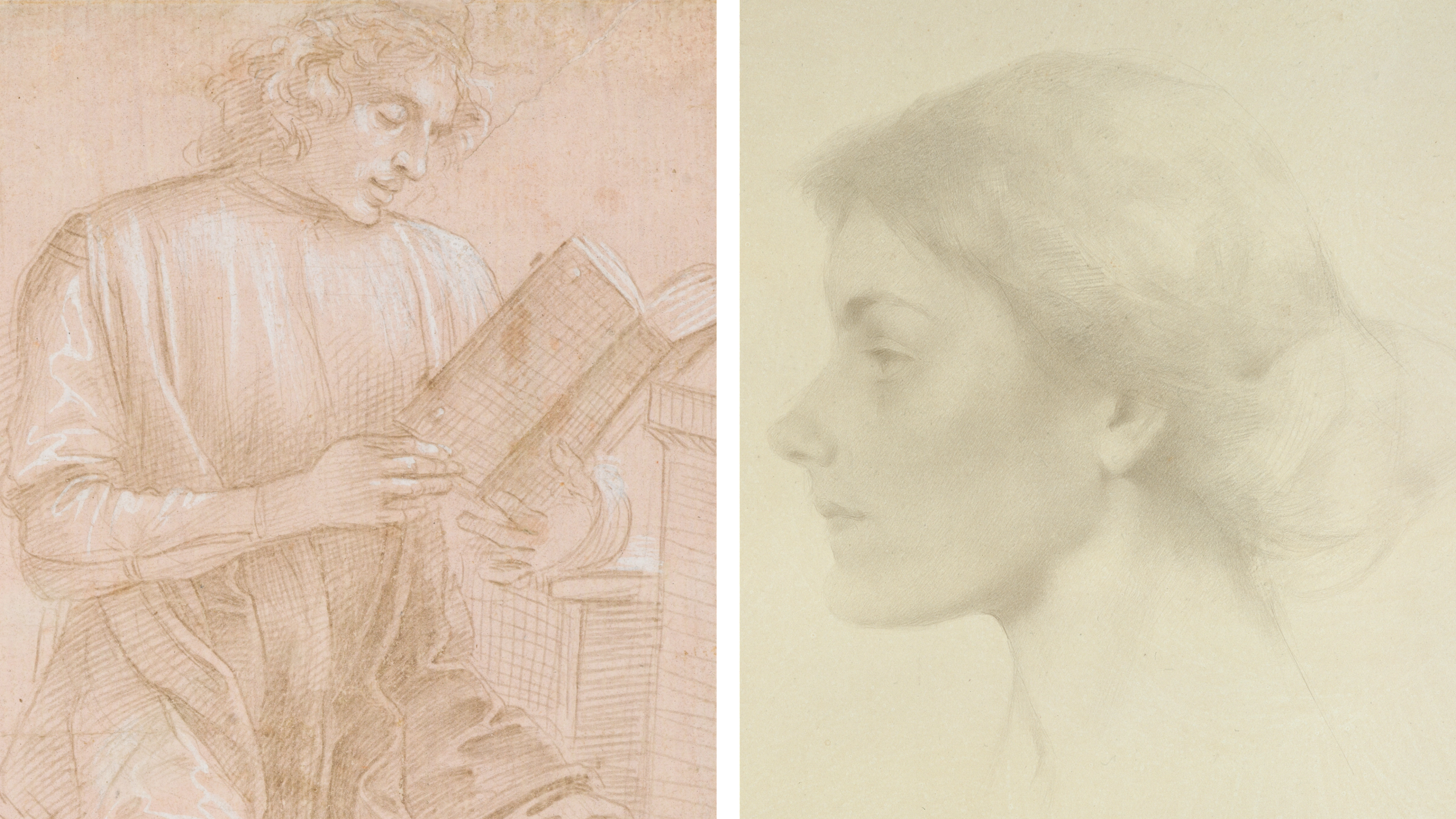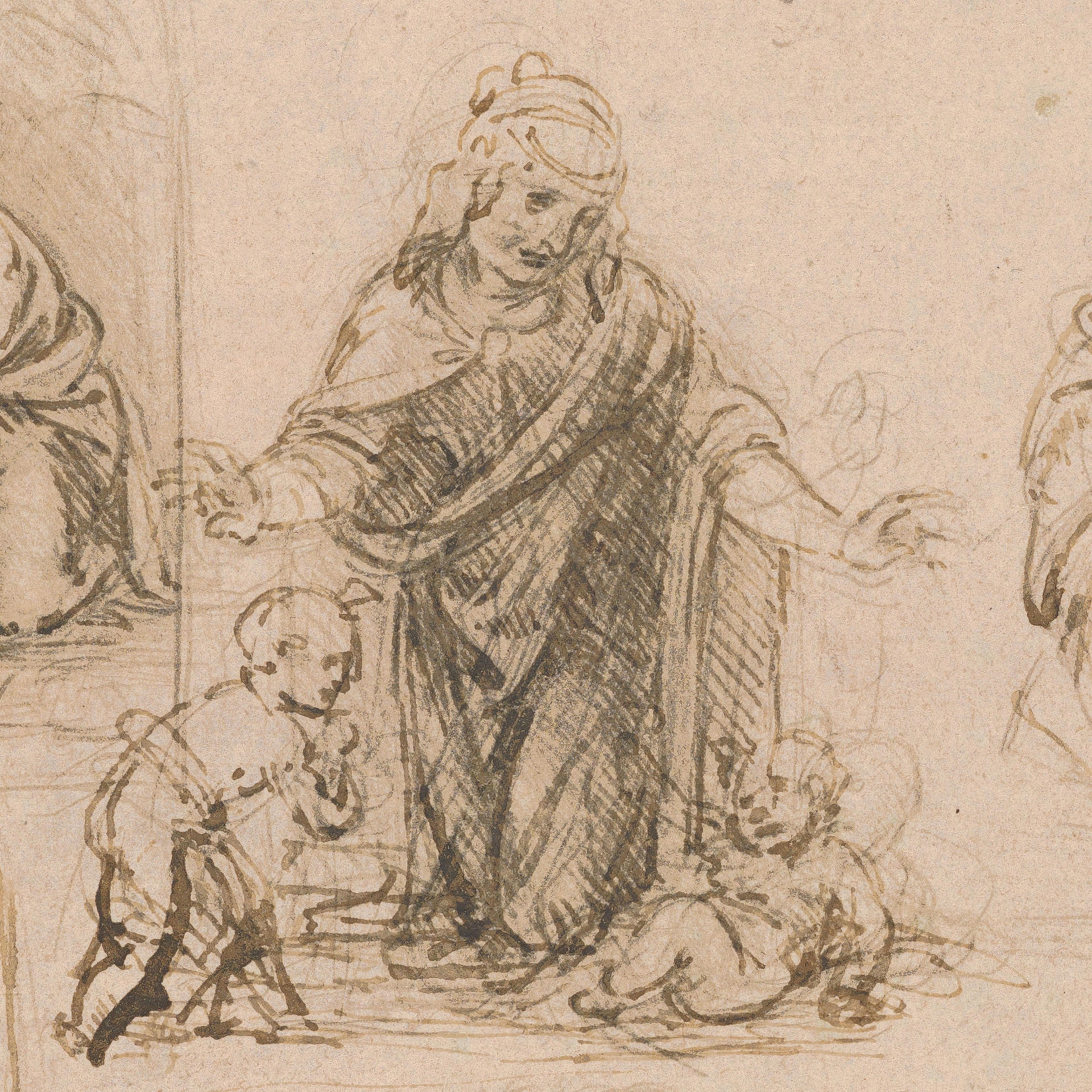A metalpoint drawing is made by applying a stylus—a thin metal rod inserted into a holder—to a prepared surface. Generally, the preparation involves coating a gesso-like ground on paper of medium thickness or a wood panel. As the stylus moves across the textured ground, it deposits miniscule particles of metal and creates a mark.

Clockwise from upper left: roller, metalpoint styluses, prepared papers, brush, mixed and unmixed grounds
Traditionally, the ground consists of a mixture of calcium carbonate (or a similar inert mineral) to give body, pigment to impart color, and a binder, such as rabbit skin glue, to hold the ingredients together. The resulting mixture is then brushed or rolled onto paper and allowed to dry. Today, artists can buy pre-made grounds and metalpoint papers.
Until the twentieth century, these drawings were generically called silverpoint. But a variety of metals have been used to produce them, including gold compounds, tin, antimony, bronze, and lead, as well as silver. Each metal oxidizes and darkens to a subtle grey-brown hue. The type of metal is difficult to recognize by eye alone and requires technical analysis, such as X-ray fluorescence, to establish its identity.
The fine metal wire traditionally used for these drawings lends itself to a precise linear technique, with forms built up from elongated strokes. The medium has neither great darkness nor tonal range, but both can be achieved by layering strokes and varying their spacing.
Artists can also create areas of mass with closely-spaced parallel hatches and cross-hatching.

Alphonse Legros (French, 1837–1911). Studies of Hands (detail), 1880-92. Metalpoint on prepared paper, 9 3/16 x 13 1/4 in. (23.4 x 33.7 cm). The Metropolitan Museum of Art, New York, Gift of the artist, 1892 (92.13.10)
Metalpoint drawing was common throughout Europe during the Renaissance, then waned in popularity before experiencing a revival in the nineteenth century that continues to this day, with many traditional techniques still being practiced. In the fifteenth century, the use of brilliantly colored, prepared papers was distinctive at a time when only natural white, off-white, and blue sheets were available. Drawings rendered on prepared papers were often highlighted with white gouache.

Left: Filippino Lippi (Italian, 1457–1504). Standing Youth with Hands Behind His Back, and a Seated Youth Reading (detail), 1457/58–1504). Metalpoint, highlighted with white gouache, on pink prepared paper, 9 5/8 x 8 1/2 in. (24.5 x 21.6 cm). The Metropolitan Museum of Art, New York, Harris Brisbane Dick Fund, 1936 (36.101.1). Right: Thomas Wilmer Dewing (American, 1851–1938). Portrait of a Woman (detail), after 1894. Silverpoint on paper, mounted on pulp board, 22 1/2 x 18 7/8 in. (57.2 x 47.9 cm). The Metropolitan Museum of Art, New York, Purchase, Bequests of Eliza W. Howland, Collis P. Huntington, Vera Ruth Miller, Lillie P. Bliss, Egbert Guernsey Rankin, and George D. Pratt, by exchange; Gifts of George I. Seney, Mrs. George Langdon Jewett, A. W. Bahr, Allison V. Armour, E. Everett Dickinson Jr., J. Pierpont Morgan, John G. Agar, and George A. Hearn, by exchange; and Vain and Harry Fish Foundation Inc. Gift, 1984 (1984.345)
Metalpoint is mostly associated with highly refined, finished drawings. However, artists have used it in a light summary manner for preliminary sketches, often further developed with pen and ink, such as in this sketch by Leonardo.

Leonardo da Vinci (Italian, 1452–1519). Compositional Sketches for the Virgin Adoring the Christ Child, with and without the Infant St. John the Baptist; Diagram of a Perspectival Projection (recto) (detail), 1480–85. Silverpoint, partly reworked by the artist with pen and dark brown ink on pink prepared paper; lines ruled with metalpoint (recto), 7 5/8 x 6 3/8 in. (19.3 x 16.2 cm). The Metropolitan Museum of Art, New York, Rogers Fund, 1917 (17.142.1)
See a selection of metalpoint drawings in The Met collection.
